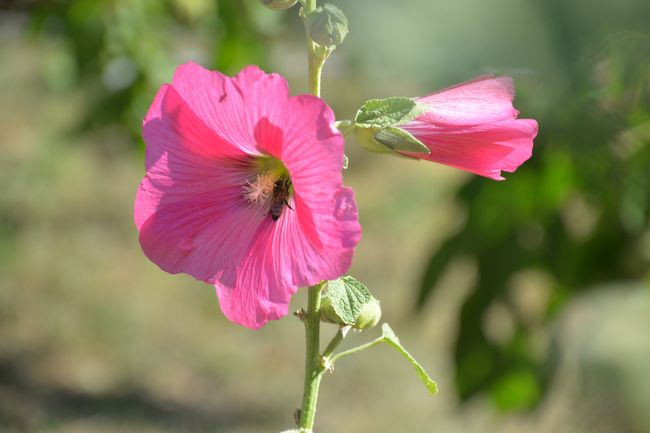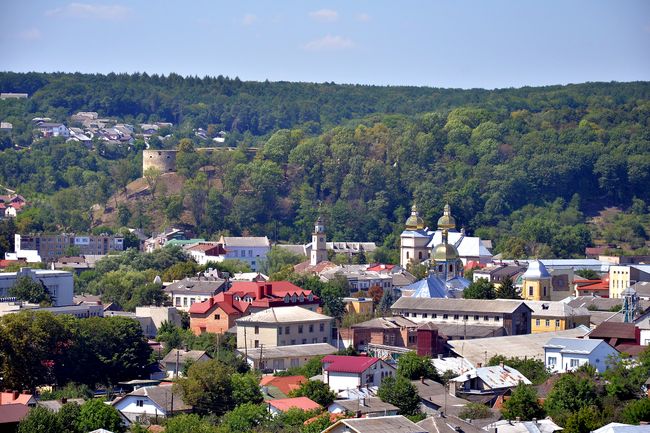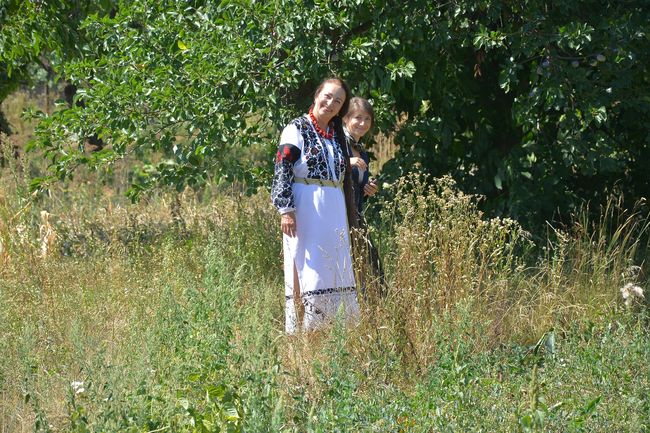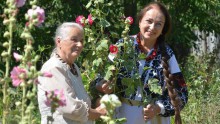Terebovlianski Sady (Terebovlia Gardens) in Ternopil region is a former village, which is now part of Terebovlia. It was called after the luxurious gardens abundant in this location. This place has a special view in spring, when everything is covered by white-rosy veil of the blossom. From here one can see the enchanting panorama of Terebovlia with its ancient castle and magnificent churches. The flowers in the Gardens rejoice the eye till the late autumn. The colors of the “people’s” flowers of the household that belongs to Vira Samoluk, who was once an artist at the New Year tree decorations factory, well known in the USSR, catch the attention. Ms. Samoluk designed New Year tree decorations – she was the only author of pictures used as a pattern for the decorations produced by the company. It is likely that every family that has preserved Soviet New Year tree decorations has her works among them.
It is a usual thing for a woman to be passionate about flowers. For only in nature one can find the colors and shapes you want to reproduce. There are tens of hollyhock species. Ms. Samoluk doesn’t know where they come from. She says the wind brings the seeds. If the hollyhock grows where it shouldn’t grow, Ms. Samoluk explains to the flower that she must replant it in a different place. Then she waters it and take cares of it. Ms. Samoluk’s mother-in-law and grandmother loved hollyhocks too. She remembers especially well when as a young girl she came to her grandfather’s household and saw the abundance of the flowers. “I imagined that I am in some unknown place. It was so beautiful. There were flowers of all colors: white, red, rosy, different, and all very beautiful.” She was fond of the field flowers – the blue cornflowers and violet field larkspur. She recalls that she brought bunches of flowers home and put them behind the icons, placed them in the corners. “And the water lilies were so beautiful,” says the woman, who grew at a riverside, “But I even like the blossom of the nettle.”

The hollyhocks flower in summer with a multicolored veil in the yard and in the garden. In August-September they fade with the last flashes of summer, but they are supplemented with other Ukrainian favorites, the sunflowers. These decorative ones are especially dear to Ms. Samoluk’s heart, because they grew from the seeds sent by her son Ivan from Austria (he has been living in Vienna for 14 years). These four-meter high flowers are growing near the house. They grow even from under the paving.
Ms. Samoluk is also sure that Ukrainian symbolic flowers, the marigolds, which rejoice the eye till the first frost, should be present in the household. The golden balls, known to everyone since childhood, beautify nearly every countryside front garden, under the walnut tree. Probably, few people know that in the scientific world this sunny miracle on long stems is called rudbeckia. “They blossom or a long time, they grow up really high. I use supports for them, but in the end they fall altogether. But I take care of them anyway. I dig them out and bring to the front side of the gate. I have planted so many of them there. I don’t throw anything away. I plant everything. Something should grow near the road. I tell my children that everything is living. And this must be appreciated,” Ms. Samoluk says.

Ms. Samoluk took her gift for drawing from her father, an authentic artist from Ostriv, Ternopil raion. There she was born and grew up. She was only one year old when she lost her mother, so her father was the beacon of her life. Since they were not especially wealthy, when the children got married, he gave them a big icon as dowry, as well as Virgin Mary’s figuring, which he created himself. They are still sacred relics in the family.
When Ms. Samoluk was assigned with designing New Year tree decorations, she immediately started to draw flowers. Those were simple chamomiles, exquisite tender mimosas, and the wreaths resembling Petrykivka painting. For kids she depicted snowmen, houses, and animals. Ms. Samoluk’s daughter, Halyna Snitovska, who works as a pedagogue, recalls her mother’s picture of a little bear pulling a cut fir-tree on a sledge, as well as a house with smoke going up from the chimney. There is a fir-tree or snowman and a path nearby.

“Present-day New Year tree decorations are very nice and glimmering. But in a way I think that they are not for children, rather they are for adults. A child would like to see a squirrel or a hair. Something that would be interesting for children,” Ms. Samoluk says. This ingenuous intelligent woman is proud of her children and grandchildren who all are honor students. Her son is living in faraway Austria, but her daughter with her family frequently come to the Gardens from Ternopil. Incidentally, Halyna has a luxurious plait cherished by her mother since her childhood years, but Ms. Samoluk is sure that it is poor genetics. Halyna collects author’s decorations and kerchiefs – she has 500 items. But her mom’s New Year tree decorations are her special passion. Because what could be compared to the feeling of child’s joy?







